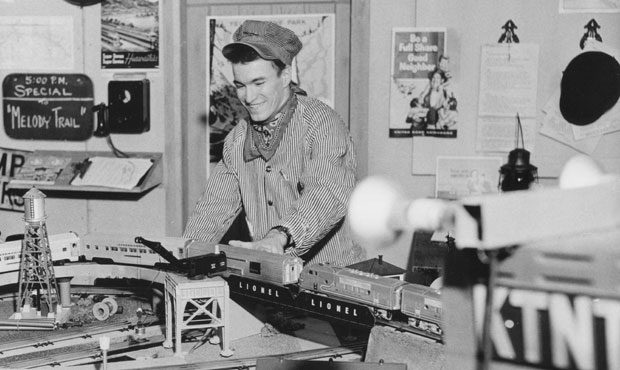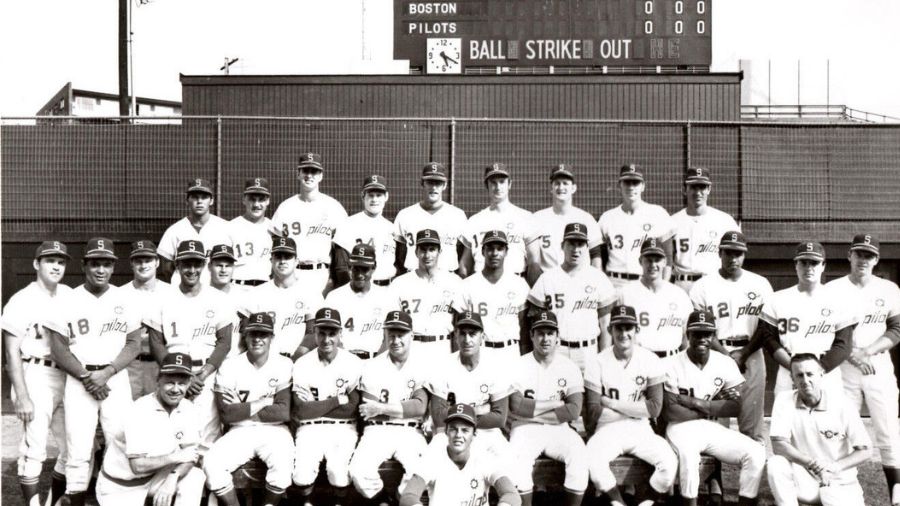All Over the Map: Beloved Narrows Plaza Bowl says farewell this weekend
Feb 18, 2022, 8:56 AM | Updated: Oct 25, 2022, 4:24 pm

"The Lifers" bowling team makes a farewell visit to Narrows Plaza Bowl in University Place Thursday night (L-R): Jamar Thomas of Tacoma; Irwin Downes of Tacoma; Arjay Aguilar of Lakewood; and Thong Le of Tacoma. (Feliks Banel, KIRO Newsradio)
(Feliks Banel, KIRO Newsradio)
It took a lot of people – especially the kind of people who regularly rent shoes – by surprise when it was announced last weekend that Narrows Plaza Bowl, south of Tacoma, would be closing for good this Sunday, Feb. 20, at 10 p.m.
Originally opening for business in 1983, the 40-lane Narrows Plaza Bowl was named for the nearby Tacoma Narrows and is located in University Place (which was named for a college campus that was planned in the 1890s but never materialized).
The bowling alley – which some industry professionals would prefer you refer to as a “bowling center” – was the site of multiple big tournaments in the 1980s and 1990s, including the Men’s U.S. Open in January 1987. There were also multiple tournament appearances there by legendary Tacoma bowler and hometown hero Earl Anthony.
One of the owners of Narrows Plaza Bowl told the Tacoma News Tribune earlier this week that they weren’t looking to sell the property, but a Seattle developer, Wood Partners, made them an undisclosed offer they couldn’t refuse. The bowling alley and an old AMC Theatre across the parking lot will be demolished, and a new apartment complex will then be built at the site.
A bowler from Lakewood named Mike Miller paid a farewell visit with members of his family Thursday night. He’s one of the many people who didn’t expect Narrows Plaza Bowl to close.
“First of all, just the way it was built in the 80s instead of the 50s,” Miller told KIRO Newsradio. “The architecture was nice. But they just dropped a couple of million dollars into this place a few years ago, replacing all the scorers, masking units, new lanes. So, out of all the bowling alleys in the area, I don’t mean to put anything else down, but this one is the nicest.”
Is he sad about the loss of what’s been a community gathering place for nearly four decades?
“Am I sad? Yeah, I grew up around here. My wife and I met bowling, and spent a lot of time here in the 80s,” Miller said. “My daughter, who bowled for her high school bowling team, this was their home house.”
“Just, you know, a lot of memories between this and the movie theater next door,” he added.
Out in the parking lot, a disappointed patron from Tacoma named Irwin Downes was clearly upset to lose Narrows Plaza Bowl. Downes is a member of a four-man bowling team called The Lifers – Downes was wearing a team shirt, and he and the other men, all from the Tacoma area, each had fancy wheeled-luggage for toting their bowling balls and other gear.
“I’m torn apart that they keep putting apartments and taking away our rec,” an emotionally charged Downes told KIRO Newsradio as his three buddies looked on, one or two perhaps rolling their eyes or quietly chuckling.
“I’m heartbroken, because it’s a place where I can come and have fun and not deal with the crowds. It’s a staple for me,” he continued. “I’ve been here 30 years, and I’ve been bowling here since 1992.”
Thursday was not the final visit to Narrows Plaza Bowl by Downes and the other members of The Lifers.
“We’re coming here all weekend,” Downes said. “And it’s perfect for us, right guys?”
The Lifers, mostly quiet during Downes’ soliloquy, finally broke their silence and heartily agreed.
Thursday night was busy, but it didn’t feel like the hardcore grieving phase or “celebration of life phase” of the all-too-familiar bowling alley, skating rink, or drive-in theatre farewell process – as truncated as this one for Narrows Plaza Bowl will ultimately be. Still, some people were in search of mementos or other tangible reminders of the place.
To that end, old pins were being offered for sale by management for a dollar a piece. An employee told KIRO Newsradio they had already sold about 20 of the battered pieces of Pierce County bowling history. One longtime Narrows Plaza bowler named Miranda Wideski had purchased an armload.
“We’re going to take them home for all the memories of the years of Narrows Wednesday Nighter’s League,” Wideski said, as she and her husband Elijah took a break from bowling to take delivery of the old relics. “We had so much fun here.”
The Good Times Lounge was pretty quiet late Thursday, but one of its bartenders predicted that Friday and Saturday will be busy, especially during the final night of karaoke on Saturday – and that she and the customers might get emotional as the hours and seconds tick away to the final moments on Sunday.
The closure of Narrows Plaza Bowl does mean job losses for perhaps a few dozen people. The handful of employees KIRO Newsradio spoke with Thursday night were mostly resigned to the reality of having their workplace disappear after Sunday, and were matter-of-fact about moving on to the next thing.
Mike Miller, the bowler from Lakewood, enjoyed a hamburger and fries from The High End Café – that’s what they call the snack bar at Narrows Plaza Bowl – as part of his farewell visit on Thursday.
“So good,” Miller said. “It’s a typical bowling alley. I mean, if you spend time in bowling alleys, like a truck stop, there’s nothing bad on the menu.”
The economic and social factors that drive so many bowling alleys and roller skating rinks and drive-in movie theatres to be demolished were well-known long before the pandemic. And, the numbers still don’t pencil out, given that people’s tastes and hobbies and recreational pursuits change, and the big parcels of real estate that were once perfect for bowling alleys – like Sunset Bowl in Ballard in 2008 – are simply irresistible to developers.
Bowling alley numbers are dwindling all over the Evergreen State, which is likely true in other parts of the country, too. Greg Olsen, executive director of the Washington State Bowling Proprietors Association told KIRO Newsradio on Friday that his group had 135 members in the 1970s, which has since dropped by more than half to a current roster of just 60. Olsen cites real estate values and other factors, such as some longtime owners retiring, as reasons for the smaller number. While pandemic related temporary closures in 2020 were tough on bowling alleys, they’re only part of the story, Olsen says.
Still, there’s something intangible that goes away when a bowling alley reaches its final frame – call it that sense of community from all those happy people mingling with each other, week after week, year after year — bowling, drinking, and eating.
Mike Miller’s daughter said it best.
“It was a cool little place,” the younger Miller said. “It was just another bowling alley you came to. Everyone knew each other. All the kids in the Saturday leagues all knew each other. The kids that bowled for their high schools knew each other.”
“It just sucks because there are just a few bowling alleys left,” she added. “But it’s just not as popular as it was.”
You can hear Feliks every Wednesday and Friday morning on Seattle’s Morning News, read more from him here, and subscribe to The Resident Historian Podcast here. If you have a question about Northwest history or a story idea, please email Feliks here.













